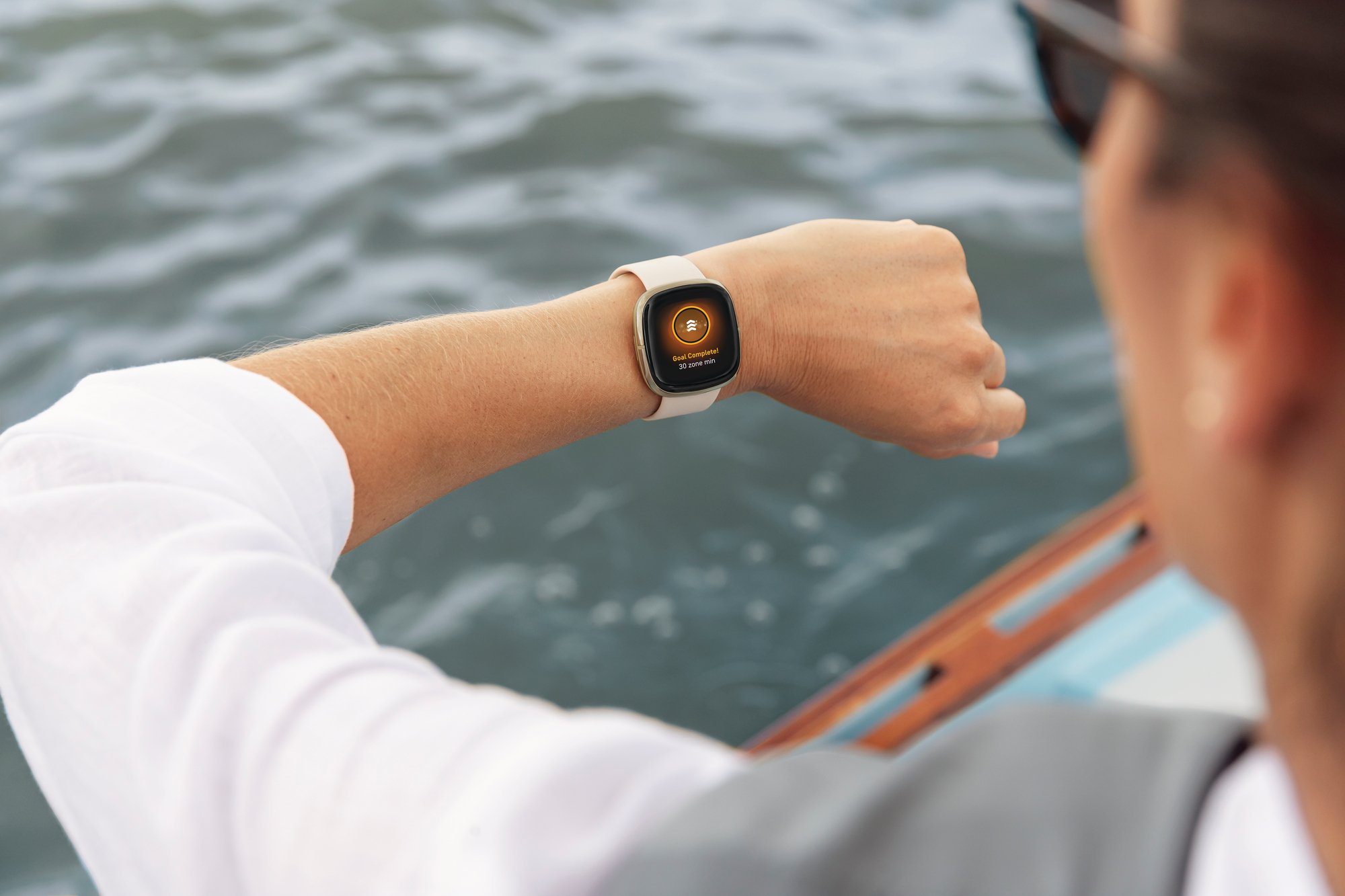Fitbit (FIT +0.00%) is showing signs of life this week. Shares of the leading maker of fitness wristbands rose nearly 5% on Monday after the company announced a collaboration with Alphabet (GOOG +1.60%) (GOOGL +1.47%) to explore the development of consumer and enterprise health solutions. The partnership may result in breakthroughs in cloud-based health tracking, or it may prove to be another dead end in Fitbit's digital health aspirations.
The key word in the partnership is "explore" since, while it can eventually lead to Fitbit cutting costs and growing in stature in connected health, it can also end in Fitbit and Alphabet shrugging their shoulders and going their separate ways. It won't shape Fitbit's fundamentals in the near term, but for that one only has to wait until Wednesday afternoon when the out-of-favor wearable fitness specialist reports its latest financial results. Let's go over a few of the things that can go wrong here.

Image source: Fitbit.
1. Results can fall short of already bleak expectations
Wall Street isn't holding out for much in Fitbit's first quarter. Analysts see revenue declining 17% to $247.6 million, which would be Fitbit's sixth consecutive period of posting a year-over-year decline on the top line. It's uglier than it seems since it would follow a 41% plunge in revenue during the prior year's first quarter. In other words, we're eyeing a 51% decline since the first quarter of 2016.
The market's also bracing for Fitbit's sixth consecutive quarterly loss. Fitbit has beaten Wall Street's profit targets more often than not, even in this downturn, so investors may be spoiled at this point. If Fitbit doesn't land ahead of where analysts are parked on both ends of the income statement, it could be a long day Thursday for those long on Fitbit.
2. Analysts are skittish
I always like to see what Wall Street pros are doing in the days ahead of a report, and in this case it's not very comforting. Morgan Stanley's Yuuji Anderson put out an uninspiring analyst note on Tuesday, arguing that channel checks suggest that the quarter will come in a bit light. He sees limited restocking of key Fitbit products at major retail locations after typical seasonal inventory reductions. Anderson feels that sharp sales declines for some of its legacy products may lead Fitbit to lower its full-year revenue target. The analyst also doesn't see Alphabet's collaboration with Fitbit as the gateway to an eventual acquisition. He had downgraded the stock to an underweight rating and lowered its price target from $5 to $4 just last month.
On Monday, it was DA Davidson's Tom Forte initiating coverage of Fitbit with a neutral rating. His $5.50 price target is essentially where the shares are now. He gives a nod to Fitbit's brand name and huge addressable market, but he still sees revenue continuing to contract over the next couple of years. The stock may be trading at a discount relative to its peers, but it's not a bullish sign when an analyst decides to initiate coverage on a stock two days before its quarterly report doesn't think the stock is going anywhere in the near term.
3. New products may not save it this year
The top line is sliding despite Fitbit widening its product line and even introducing its first legitimate smartwatch in 2017. Revenue also fell harder domestically than it rose overseas in its previous quarter, a painful reminder that Fitbit's status is fading on its home turf.
Fitbit's response has been more products, including cheaper smartwatches and fitness wristbands for kids, but until it can start growing in sales, investors will rightfully be skeptical that a turnaround is even possible. Fitbit's guidance for this year calls for $1.5 billion in revenue despite all of the innovative products and evolutionary upgrades, less than the $1.6 billion it rang up last year and well off its $2.2 billion peak in 2015. One hit product can move the needle, but so far the needles keep going in the wrong direction.







